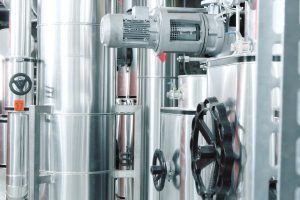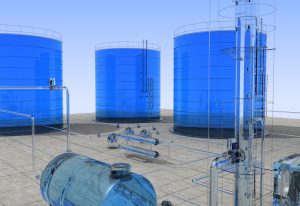Specialized Engineering Services
Engineering Excellence: Empowering Your Success with Professional Engineering Services
Our Specialized Engineering Services
Azura Consultancy is a specialized multi-disciplinary engineering services provider for the power generation, district energy, and data center industries. Our team of expert engineers and technical professionals are dedicated to delivering innovative solutions that address the unique challenges faced by our clients in these industries.
With years of experience and a deep understanding of the complexities involved in power generation, district energy, and data centers, we provide a wide range of services including design, construction, commissioning, operation, and maintenance. We pride ourselves on our ability to deliver projects on time and within budget, while also ensuring the highest level of quality and safety standards.
- Piping Stress Analysis (using CAESAR II or Rohr 2 Software)
- CFD Analysis in data centers for white spaces e.g. data halls
- Uptime Tier III & Tier IV Certifications for data centers
- Thermal Energy Storage (TES) Tank and Diffuser Design
- Hydraulic and Surge Analysis
- Energy Audits
Piping Stress Analysis
Definition: Piping Stress Analysis is a specialized engineering technique used to evaluate the behavior and performance of piping systems under various operating conditions. It involves analyzing the stresses, strains, and deformations that occur in the piping components, ensuring their structural integrity, safety, and compliance with industry standards and codes.
Introduction: Piping Stress Analysis plays a crucial role in the design, construction, and operation of piping systems across various industries such as oil and gas, petrochemical, power generation, and industrial manufacturing. It involves the application of advanced engineering software and methodologies to simulate and assess the behavior of piping systems, enabling engineers to identify potential issues and optimize the design for reliability and performance.

Professional services in the field of Piping Stress Analysis adhere to high standards and best practices, including the standardization of software tools like CAESAR II or Rohr 2. These industry-leading software solutions are widely used by engineering professionals to perform accurate and comprehensive stress analysis, taking into account factors such as pressure, temperature, fluid flow, and equipment movements.
By utilizing CAESAR II or Rohr 2 software, professional service providers can model complex piping systems, apply relevant load conditions, and evaluate the stresses and strains to determine potential failure points. These software tools offer advanced features and capabilities, including finite element analysis (FEA), flexibility analysis, fatigue analysis, and code compliance checks, ensuring the accuracy and reliability of the stress analysis results.
Standardizing on the use of CAESAR II or Rohr 2 software within professional services ensures consistency, efficiency, and compatibility in delivering high-quality stress analysis services to clients. It enables engineers and analysts to effectively assess the structural integrity of piping systems, identify potential design flaws or weaknesses, and propose necessary modifications or reinforcements to ensure safe and reliable operation.
Overall, Piping Stress Analysis, supported by software such as CAESAR II or Rohr 2, is a critical aspect of engineering services that ensures the integrity and longevity of piping systems, mitigating the risks of failure, leakage, or catastrophic incidents.
CFD Analysis in data centers
Definition: Computational Fluid Dynamics (CFD) Analysis in data centers for white space refers to the application of computer-based simulations to study and optimize the airflow, temperature distribution, and thermal management within the white space area of a data center. It involves modeling and analyzing the complex interaction of airflows, heat sources, and cooling systems to ensure efficient and effective cooling of IT equipment while maintaining optimal operating conditions.
Introduction: In modern data centers, efficient cooling is paramount to maintaining the reliability and performance of IT equipment. CFD Analysis for the white space area allows data center operators and engineers to gain insights into the airflow patterns, temperature distribution, and heat dissipation characteristics within the data center facility.
By utilizing advanced CFD software and techniques, data center professionals can simulate and visualize the movement of air and heat within the white space, enabling them to identify potential hotspots, areas of inadequate cooling, or inefficient airflow patterns. This analysis helps optimize the layout of racks, placement of cooling equipment, and airflow management strategies to enhance cooling effectiveness, reduce energy consumption, and improve overall thermal performance.
CFD Analysis in data centers for white space takes into account various factors such as server load, equipment density, server inlet temperatures, and cooling system configurations. It helps data center operators make informed decisions on cooling infrastructure design, including the placement of air conditioning units, perforated floor tiles, and hot/cold aisle containment systems.
Additionally, CFD simulations can assist in evaluating the impact of changes or modifications to the data center, such as adding new equipment, rearranging server racks, or adjusting cooling strategies. This analysis aids in predicting the thermal consequences of such changes, allowing for proactive measures to be taken to maintain optimal operating conditions, prevent thermal bottlenecks, and improve overall energy efficiency.
Uptime Tier III & Tier IV Certifications for data centers
Uptime Tier III & Tier IV certifications are industry standards that measure the reliability and resiliency of data centers. These certifications assess the facility’s infrastructure, design, and operational capabilities to ensure maximum uptime and availability of critical IT systems.
Achieving Uptime Tier III & Tier IV certifications is a testament to the high standards and robustness of a data center’s infrastructure. These certifications provide assurance to businesses and organizations that their data center operations will remain uninterrupted even in the face of power outages, equipment failures, or other unforeseen events.
- Uptime Tier III Certification: This certification signifies that a data center has redundant components and systems in place to minimize the risk of downtime. It ensures that the facility can withstand planned maintenance activities or equipment failures without impacting the critical IT operations.
- Uptime Tier IV Certification: Considered the highest level of certification, Tier IV signifies a fault-tolerant design that ensures uninterrupted operation even during the most severe events. It provides redundancy at every level, including power, cooling, networking, and security systems, guaranteeing the highest level of availability.
Unleash Engineering Excellence: Elevate Your Projects with Our Expertise!
Discover the advantage of our experience enabling you to meet your unique project requirements. Our team of experts combines technical expertise and innovation to deliver exceptional results from concept to completion.
Thermal Energy Storage (TES) Tank and Diffuser Design
Definition: Thermal Energy Storage (TES) Tank and Diffuser Design refers to the specialized engineering process of designing and optimizing storage tanks and diffusers in thermal energy storage systems. These systems store and release thermal energy for various applications, contributing to energy efficiency, load balancing, and cost savings.
Introduction: In today’s era of energy sustainability, Thermal Energy Storage (TES) has become a prominent solution for efficiently managing thermal energy. TES systems store excess thermal energy during periods of low demand and release it when there is a higher demand or during peak hours. This technology plays a crucial role in enhancing energy efficiency, reducing reliance on fossil fuels, and optimizing energy consumption in applications such as HVAC systems, renewable energy integration, and industrial processes.

TES Tank and Diffuser Design is a specialized engineering discipline focused on designing storage tanks and diffusers that effectively store and distribute thermal energy. The design process considers various factors such as tank materials, insulation, size, shape, heat transfer characteristics, and diffuser configurations.
The primary objective of TES Tank Design is to maximize energy storage capacity, minimize energy losses, and ensure the integrity and long-term performance of the storage system. Tanks are designed to store hot or cold fluids that hold the thermal energy until it is needed. Optimal tank design involves selecting appropriate materials, insulation techniques, and efficient heat transfer mechanisms to maintain the stored energy at desired temperatures.
Diffuser Design, on the other hand, aims to distribute the stored thermal energy effectively within the target application. Diffusers release the stored energy into the surrounding environment or transfer it to the intended process or space. Efficient diffuser design ensures uniform distribution of thermal energy, taking into account airflow patterns, temperature distribution, and pressure drop, among other factors.
To achieve the best results in TES Tank and Diffuser Design projects, it is highly beneficial to engage professional services. These services bring valuable expertise, experience, and resources to the table. Some key benefits of using professional services in such projects include:
Specialized Knowledge: Professional service providers have a deep understanding of thermal energy storage systems, including tank design principles, heat transfer mechanisms, material selection, and diffuser configurations. They possess the knowledge to develop customized designs that meet the unique requirements of each project.
Advanced Simulation and Modeling: Professional services employ advanced software tools and simulation techniques to model and analyze the performance of TES tanks and diffusers. This enables accurate predictions of energy storage, heat transfer, and system behavior, leading to optimized designs and efficient operation.
Compliance with Standards and Regulations: Professional service providers are well-versed in industry standards, codes, and regulations governing thermal energy storage systems. They ensure that the designs adhere to safety, efficiency, and environmental guidelines, reducing the risk of non-compliance and ensuring the reliability of the system.
Cost and Energy Savings: By leveraging their expertise, professional services can optimize TES tank and diffuser designs to maximize energy storage capacity, minimize energy losses, and enhance system efficiency. This results in significant cost savings through reduced energy consumption and improved operational performance.
Risk Mitigation: Professional services help mitigate risks associated with TES tank and diffuser design by conducting thorough feasibility studies, identifying potential design flaws, and proposing appropriate solutions. Their expertise minimizes the chances of costly errors and ensures the successful implementation of thermal energy storage systems.
Hydraulic and Surge Analysis
Definition: Hydraulic and Surge Analysis refers to the engineering process of analyzing and modeling fluid flow behavior, pressure variations, and surge phenomena within piping systems. It involves the use of advanced techniques and software to assess the performance, efficiency, and safety of hydraulic systems, ensuring reliable operation and protection against potential water hammer events.
Introduction: In various industries such as water distribution, oil and gas, and process engineering, understanding and managing fluid flow behavior is critical to maintaining system integrity and operational efficiency. Hydraulic and Surge Analysis plays a crucial role in evaluating the hydraulic performance of piping systems, predicting pressure variations, and safeguarding against surge events that can cause equipment damage or operational disruptions.
Hydraulic Analysis involves modeling and analyzing the fluid flow within piping networks, considering factors such as pipe diameter, length, roughness, and fluid properties. This analysis helps to determine parameters such as flow rates, pressure losses, head losses, and pump requirements, ensuring optimal performance and efficient operation of the hydraulic system.
Surge Analysis, also known as water hammer analysis, focuses on the transient behavior of fluid flow, specifically the sudden changes in pressure resulting from abrupt changes in flow velocity. Surge events can occur due to rapid valve closure, pump shutdown, or other operational changes, and can lead to excessive pressure spikes, pipe stress, and even pipe failure. Surge analysis identifies potential surge points, predicts pressure variations, and assists in designing appropriate surge protection measures to prevent equipment damage and system failures.
Engaging professional services in Hydraulic and Surge Analysis projects offers several benefits:
Expertise and Experience: Professional service providers have specialized knowledge and experience in hydraulic and surge analysis. They possess a deep understanding of fluid dynamics, pipe network behavior, and surge mitigation strategies. Their expertise ensures accurate modeling, analysis, and interpretation of hydraulic systems, resulting in reliable and efficient designs.
Advanced Software and Tools: Professional services utilize advanced hydraulic analysis software and modeling tools that enable precise simulation of fluid flow behavior, pressure variations, and surge phenomena. These tools provide in-depth insights into system performance, allowing for informed decision-making and optimization of hydraulic designs.
Risk Mitigation: Hydraulic and surge analysis professionals can identify potential risks and vulnerabilities within piping systems. By conducting comprehensive analyses, they can identify surge points, assess pressure variations, and propose appropriate surge protection measures. This helps mitigate the risk of equipment damage, system failures, and costly repairs.
Compliance with Standards and Regulations: Professional service providers are well-versed in industry standards, codes, and regulations related to hydraulic and surge analysis. They ensure that designs and systems meet the required safety and performance criteria, ensuring compliance with relevant standards and regulations.
Cost Optimization: By leveraging their expertise and simulation capabilities, professional services can optimize hydraulic designs to minimize pressure losses, improve energy efficiency, and reduce operational costs. Their analysis helps identify opportunities for system optimization, pump sizing, pipe sizing, and control strategies, resulting in cost savings throughout the lifecycle of the hydraulic system.
Energy Audits
Definition: Energy audits refer to a systematic evaluation and analysis of energy usage, energy efficiency, and energy management practices in residential, commercial, or industrial settings. Energy audits aim to identify energy consumption patterns, detect inefficiencies, and propose recommendations for energy-saving measures, leading to reduced energy consumption, cost savings, and environmental sustainability.
Introduction: In an era of increasing energy costs and environmental concerns, energy audits have become essential tools for individuals, businesses, and organizations seeking to optimize their energy usage and reduce their environmental footprint. Energy audits involve a comprehensive examination of energy-consuming systems, equipment, and practices to assess their performance, identify inefficiencies, and propose actionable recommendations for improvement.
Professional services in energy audits bring expertise, experience, and specialized tools to accurately evaluate energy consumption patterns and identify opportunities for energy optimization. These services involve a systematic approach that typically includes the following steps:
Data Collection and Analysis: Professional auditors gather and analyze energy consumption data, utility bills, building specifications, and operational parameters. This information provides insights into energy usage patterns, peak demand periods, and areas of high energy consumption.
On-Site Inspections and Assessments: Professional auditors conduct detailed on-site inspections, examining energy-consuming systems such as HVAC (Heating, Ventilation, and Air Conditioning), lighting, appliances, insulation, and building envelope. They assess the condition, performance, and efficiency of these systems, identifying areas where energy savings can be achieved.
Energy Performance Analysis: Professional services utilize advanced energy modeling and simulation tools to analyze energy performance and calculate energy consumption baselines. This analysis helps identify inefficiencies, quantify potential savings, and prioritize energy-saving measures.
Recommendations and Action Plan: Based on the findings from data analysis and on-site assessments, professional auditors provide customized recommendations and an action plan. These recommendations may include equipment upgrades, retrofits, behavior modifications, and operational adjustments to improve energy efficiency and reduce energy consumption.
Benefits of using professional services in energy audits:
Expertise and Knowledge: Professional auditors possess specialized knowledge of energy systems, building codes, and energy-efficient technologies. Their expertise ensures accurate analysis, identification of energy-saving opportunities, and effective implementation of energy-saving measures.
Cost Savings: Professional services help identify inefficiencies and implement energy-saving measures that result in significant cost savings. By reducing energy consumption, businesses and individuals can lower their utility bills, improve their bottom line, and achieve a quick return on investment.
Environmental Sustainability: Energy audits contribute to environmental sustainability by reducing greenhouse gas emissions and minimizing resource depletion. By optimizing energy usage, professional services help mitigate the environmental impact associated with energy consumption.
Compliance and Certification: Professional auditors are well-versed in energy codes, regulations, and certification programs. They ensure that energy audits comply with industry standards and can assist businesses in achieving energy-related certifications such as LEED (Leadership in Energy and Environmental Design) or ENERGY STAR.
Long-Term Energy Management: Professional services provide ongoing support and guidance in energy management, helping businesses and individuals establish energy-saving practices, track energy performance, and implement continuous improvement strategies. This leads to sustained energy efficiency and long-term cost savings.
Our Professional Services Also Cover
- CFD Analysis ( for IT halls, Cooling Towers, TES Tanks, Generator Rooms, etc.)
- Energy Modeling & Analysis
- Cooling/Heating Load Calculation & HVAC Design
- High/Medium/Low Voltage Electrical Transmission Line Design & Analysis
- Acoustic Study & sound mapping
- Day-lighting & Shading Analysis
- Electrical Power System Analysis
- Electrical Short Circuit & Harmonics Calculations & Analysis
- Lighting Analysis
- Vehicle Swept Path Analysis
- 3D BIM Models (LOD 300-500), Walk-through Videos , Rendering, Simulations, Virtual Reality









